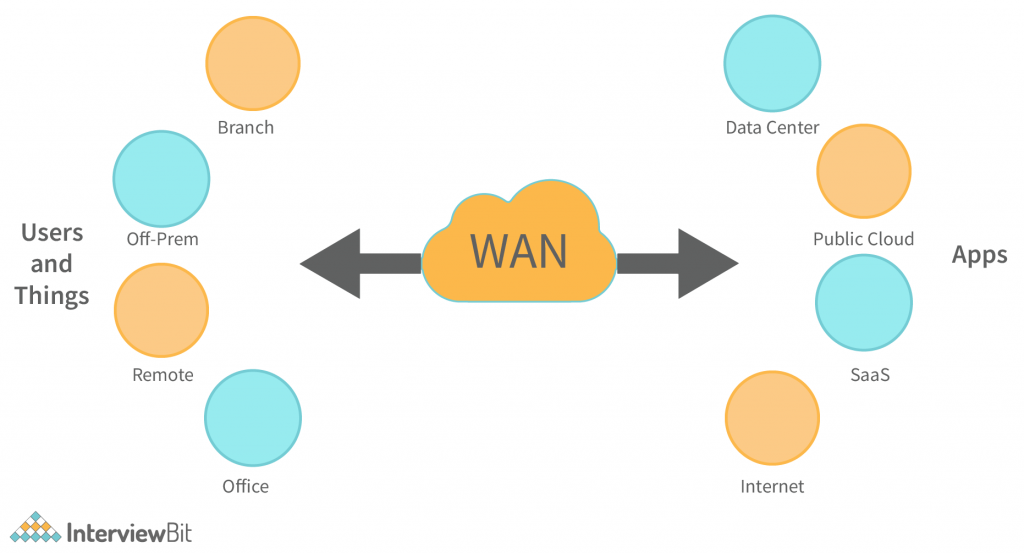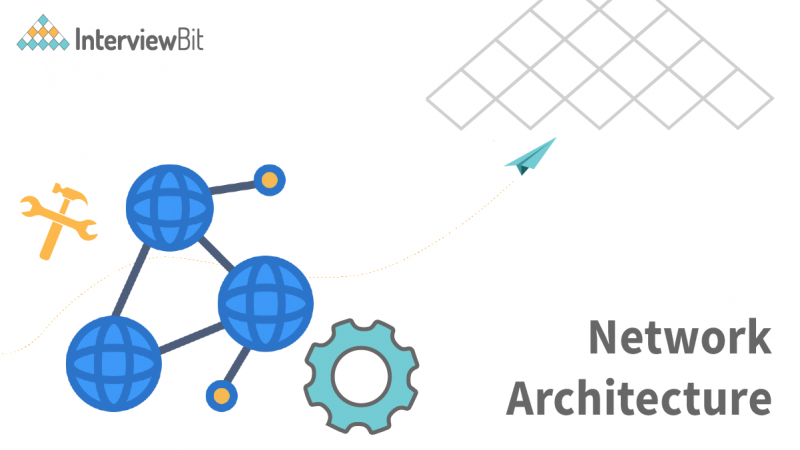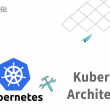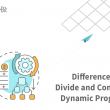A network architecture is a set of interconnected computer systems that connects one or more computers to the Internet. An important aspect of a network architecture is the way in which the network is designed to function. For example, a network architecture that is designed to support high-bandwidth applications such as streaming video and voice over IP (VoIP) services will need to be able to handle large amounts of data with high efficiency. In addition, a network architecture that is designed to support high-performance computing (HPC) will need to be able to handle large amounts of data with high efficiency. A network architecture should also be designed with security in mind. Security is an important aspect of any network architecture because it is one of the most important ways in which a network can be made secure. For example, it is important for a network architecture that is designed to support HPC to be able to protect sensitive data from unauthorized access. In addition, it is important for a network architecture that is designed to support high-performance computing to be able to protect sensitive data from unauthorized access. Network architectures often determine the flow of data within an organization.
For example, if an organization has a sales team whose members are located in different countries, then data from those members must be transferred across international boundaries before it can be analyzed and used to determine sales trends. This is a particular problem when sales data is volatile or inaccurate. Another common issue is that network architectures often determine the order in which data is analyzed and used within an organization. We will also discuss the pitfalls of network design, and the decisions that need to be made to make sure that clients are happy with the final result. By the end of this article, you will be well-versed in the various challenges that you face when designing a network, and be better positioned to choose the right solution for your particular situation.
What is Network Architecture?
The data originates from one system and arrives at another through a middleware or application services layer. Data flows from one system to another through an application services provider or middleware. An implementation of an application services provider or middleware hosts an application services layer that hosts data flow entities, such as data sources and consumers, and controls how data flows through the system.
Confused about your next job?
- A logical network, then, is a collection of policies that defines when, where and for how long devices can connect to each other. The connection rules may be based on the device’s capabilities, the device’s location or a combination of the two. In some cases, the logical network may be the same as the physical network. In other cases, it may be an overlay network that only shows up on top of the physical network. In still other cases, it may be a peer-to-peer network that allows devices to connect to each other directly, rather than through a central management entity.
- The physical separation of the network hardware from the logical structure allows the hardware to be updated and reprogrammed without affecting the network functionality. When the network interface is implemented on the same physical platform as the data processing, it is called a bridge. This type of network interface is usually not recommended for WLANs. When the network interface is implemented in the logical structure, it is called a router. Routers are usually not advised for WLANs. When the network interface is implemented with software, it is called a software router. Software routers are usually not advised for WLANs. When the network interface is implemented with firmware, it is called a firmware router. Routers are usually not advised for WLANs. When the network interface is implemented with a smart card, it is called a smart card router. Smart card routers are usually not advised for WLANs.
- Similarly, performance standards may be used to forecast network growth and plan for future expansion. With the advent of the Internet, businesses have expanded their reach far beyond their original buildings. The same level of service and security they demanded when they started must be delivered now and into the future. As the Internet continues to grow, businesses will need to upgrade their networks at a faster rate than ever before. Through performance standards, IT departments can proactively identify and address bottlenecks that could cause performance to drop significantly or be entirely inaccessible.
- A role-based access control system provides fine-grained authorization for network resources by groups of users or roles. Role-based access control can be implemented through a centralized system, a decentralized system, or a hybrid system. A centralized system requires that all the resources in a given role must be authorized through a single control point. This can be problematic if the control point is compromised or out of sync with the rest of the network. When implemented through a decentralized system, users can assign roles to other users and resources, which helps to secure the network against role-based attacks.
Now, networking is a broad concept. It includes data transmission across the physical and virtual realms, and routing information within the data center. It does not, however, encompass all the various technologies that are used for data transmission. The current trend is towards using open standards for all these technologies, and towards migrating to software-defined networks (SDN) for public- and private-sector enterprises. SDN is a set of network technologies that includes network virtualization, programmability of network devices, and data-driven decision making.
- Virtualisation can be used to create a network that is similar to a physical network, but with virtual machines instead of physical servers. The virtual servers can be used to provide similar functionality to physical servers. Software-based virtualisation allows for the efficient and low-cost delivery of networking services over the Internet or other networks. An important consideration in software-based virtualisation is the selection of the right software. There are multiple software virtualisation solutions available in the market today, but only a few of them are considered to be reliable and secure. The recent security incidents against popular virtualisation solutions such as VMware, Citrix, and Hyper-V have highlighted the need for greater vigilance in this area.
- The internet has a divide, but it’s not as black and white as you might think. Users of cloud apps benefit from the anonymity and convenience of the web. However, users of on-premises software benefit from the ability to control who can see their data and who cannot. The internet has a divide, but it’s not as black and white as you might think. Users of cloud apps benefit from the anonymity and convenience of the web. However, users of on-premises software benefit from the ability to control who can see their data and who cannot.
- There are many benefits of remote working, including the ability to access corporate data when and where you need it, improved collaboration, and reduced travel time. Unfortunately, not all remote work environments are created equal. Although virtual offices can improve productivity and make remote work more accessible to employees, they are not a substitute for a safe and healthy work environment. Remote work can be an important part of an overall healthy work-life balance, but it is not a magic bullet.
Types of Networking Architecture
Network architectures range from private to internet-based. It is important to distinguish between private and internet-based networks.
Private networks
With the increasing adoption of cloud technologies and the move to the Internet of Things, the need for accessibility between sites and devices where data is stored and exchanged has never been greater. In order to meet these needs, telcos need to optimize their WAN links between their data centers and clients by choosing the right WAN solution. To protect private networks from these threats, you must monitor them and maintain continuous awareness of their state. Private networks are different from public networks in that the monitoring and maintenance of private networks is often more detailed and thorough.
Public networks
Cloud services, compared to traditional software, offer greater capabilities and performance. It is also simpler to maintain the underlying computing and networking systems. Another important consideration is that cloud services may have different costs and benefits depending on the location of the service provider. For example, a hosting provider may offer cloud services in one country but have data centers in another country. When considering the location of cloud services, it is important to understand the regulatory and cultural environment in which the cloud service provider operates.
Architecting trust
Virtual private networks (VPNs) provide a number of benefits, including security, privacy, and access to global content and data. Unfortunately, VPNs also have a penchant for becoming a source of vulnerability as cybercriminals and hackers target these protections to subvert the functionality of the VPN. By deploying security controls that minimize the risk of subversion, VPNs can be used to enhance the security and privacy of client devices, as well as the security and privacy of data endpoints within the corporate network. Zero trust networks (ZT) have undergone a paradigm shift from protecting a trusted network to protecting every individual resource. Despite the fact that anyone can use a device, perform a method of connection, or even access a resource, every authentication and authorization procedure is required.
Network Architecture Design
Building blocks for any digital network architecture must be optimized in order for the architecture to be successful. These include:

Hardware
There are various ways to do this, such as dividing the network into segments, combining segments into a single route, or using a hybrid of these methods. You can also consider the effect of the hardware on your data, such as how much bandwidth a mobile phone has and how much data it downloads in a day. Another important consideration is the type of network you are using: a wireless network or a wired network. When considering the hardware, don’t limit yourself to looking at the physical size of the network. The bigger the network, the larger the chance that a single point of failure will cause a cascading failure of network links
Transmission Media
Transmission speeds vary from a minimum of 1 to 100 Mbps, depending on the technology used in the network and the conditions under which it is implemented. A typical home internet connection is somewhere between 1 to 10 Mbps. Internet Service Providers (ISPs) often offer faster speeds to their customers to increase their profits. Speed is a very important factor for online gaming. Games that are played at high resolutions and high frame rates, such as first-person shooters, need high-speed Internet connections to keep players interested in the game. Poorly implemented internet connections can cause a significant decrease in gaming performance, just as poor cell service can cause long delays when using GPS to navigate.
Protocols
While most of the focus ini mentioned that most iOS developers are familiar with the HTTP and HTTPS protocols, they are not the only options. Network protocols govern how data is transferred between devices in a network. They are also the common language that allows devices in a network to communicate with one another. Without protocols, your iPhone would not be able to connect to a web page on a Linux server. Protocols vary based on the type of data. Networks use TCP/IP, the Ethernet protocol, and the File Transfer Protocol to connect to the Internet, as well as other protocols that are used in various contexts.
Topology
Network topology is just as important as its parts. In order to improve the topology, it is essential to understand how it’s wired together. This is what network topology refers to. A well-developed network topology has both its benefits and drawbacks. Similarly, a star topology does not provide any benefit if the hub is compromised. In a star topology, all devices are connected to the same hub. With a star topology, every device is connected to the hub, which in turn is connected to every other device. Even though the star topology is convenient, it does not provide any advantage over other topologies. The only advantage of the star topology is that it is very easy to connect devices to the network. Bus topologies are often the most cost-effective way to connect a large number of devices to the internet. They are also very flexible, and can be repurposed for a variety of different needs. The most common form of bus topology is the ring network, where devices are connected to a central server via a bus. Other common topologies include fiber optic, copper, wireless, and mesh.
Advantages of Network Architecture
The main advantages of computer Architecture are listed below:
- There are many benefits to using a file server as the underlying host for a private network. It is highly secure, distributed and uses minimal resources. A private network can be used to share files and resources across an organization without the need for a networked computer (e.g. a file server) to host the files and resources.
- With the help of modern technology, any child who is interested in technology can join the network. Kids with an interest in science or technology can join the network, too. And most importantly, it is critical for children with an interest in technology to join a social network that they are comfortable with.
- A lot of a procedure is broken down into a few smaller steps and each is dealt with by all the components. Since an extensive procedure is disintegrated into a few littler procedures and each is dealt with by all the components, an explicit problem can be resolved in less time.
- This is known as redundancy. In cases where there is not enough redundancy in a network, or where the network connection is poor, a computer may become inaccessible as a result of equipment failures, for example, and so on, resulting in smooth working on both computers, and requiring no interruption. This is known as redundancy. For example, a company may have a mainframe computer system that controls a large part of its operations. If a mainframe computer system goes down, operations may be halted on other computer systems that control the company’s inventory, financial accounting, and other activities. On the other side, if the mainframe computer system goes down, operations may be halted on other computer systems that control the company’s inventory, financial accounting, and other activities.
- This can include the language used, the team of developers who created the software, the process used to build it, the tools the developers used, and so on. This is a good way to understand the whole product from the ground up.
- The encryption of information in a system also helps to protect it. The encryption of information in a system prevents people from viewing or reading that information and also prevents people from accessing that information. This is different from a hard copy of the information that someone can see. People can view the confidential information on their computer screen or on a mobile phone, but they cannot read it.
- In case you have other individuals with whom you share assets, you must make sure that these individuals are aware of how the system works. You should also create a detailed legal inventory of all your assets, assign an official identifier to each asset, and create a legal disposition order for all your assets. You must also make sure that all other individuals who have access to your assets understand the legal implications of their possession of these assets and have agreed to them.
Disadvantages of Network Architecture
The main drawbacks of computer Architecture are:
- The primary server is the system that stores all the information, receives and distributes the data, and also serves as the gateway to the network. It should be noted that the primary server does not have to be the computer that stores all the data. It just has to be the system that receives and distributes the information, hence the term “gateway”. The primary server can be a mainframe or a PC. The main concern when choosing a PC is the availability of the system. Therefore, the server should be one that can be easily accessed, licensed, and maintained.
- You may think that it is not important for your company to choose which operating system will be used by the majority of the company’s employees. Well, you are right. It is not about the operating system, but about the process of choosing an operating system for your company’s PCs.
- Thus, it is essential to keep a check on the devices. Moreover, it is always advisable to use a trusted computing platform when it comes to sensitive data. A trusted computing platform includes tools like antivirus, firewalls, and other utilities. In order to use a trusted computing platform, it is essential to keep a regular check on the functions of these tools.
- A system can be expensive to build due to cabling and equipment costs.
Conclusion
The purpose of a network architecture is to provide a framework for organizing and managing the network infrastructure. In addition to providing a structure for managing the network infrastructure, the architecture should also provide for the efficient and effective use of the network resources. The most important aspect of a network architecture is its structure. The structure should be organized in such a way that it provides for the efficient and effective use of the network resources. The most important aspect of a network architecture is its structure. The structure should be organized in such a way that it provides for the efficient and effective use of the network resources. The most important aspect of a network architecture is its structure. The structure should be organized in such a way that it provides for the efficient and effective use of the network resources. The most important aspect of a network architecture is its structure. The structure should be organized in such a way that it provides for the efficient and effective use of the network resources. The most important aspect of a network architecture is its structure. The structure should be organized in such a way that it provides for the efficient and effective use of the network resources. The most important aspect of a network architecture is its structure. The structure should be organized in such a way that it provides for the efficient and effective use of the network resources.




